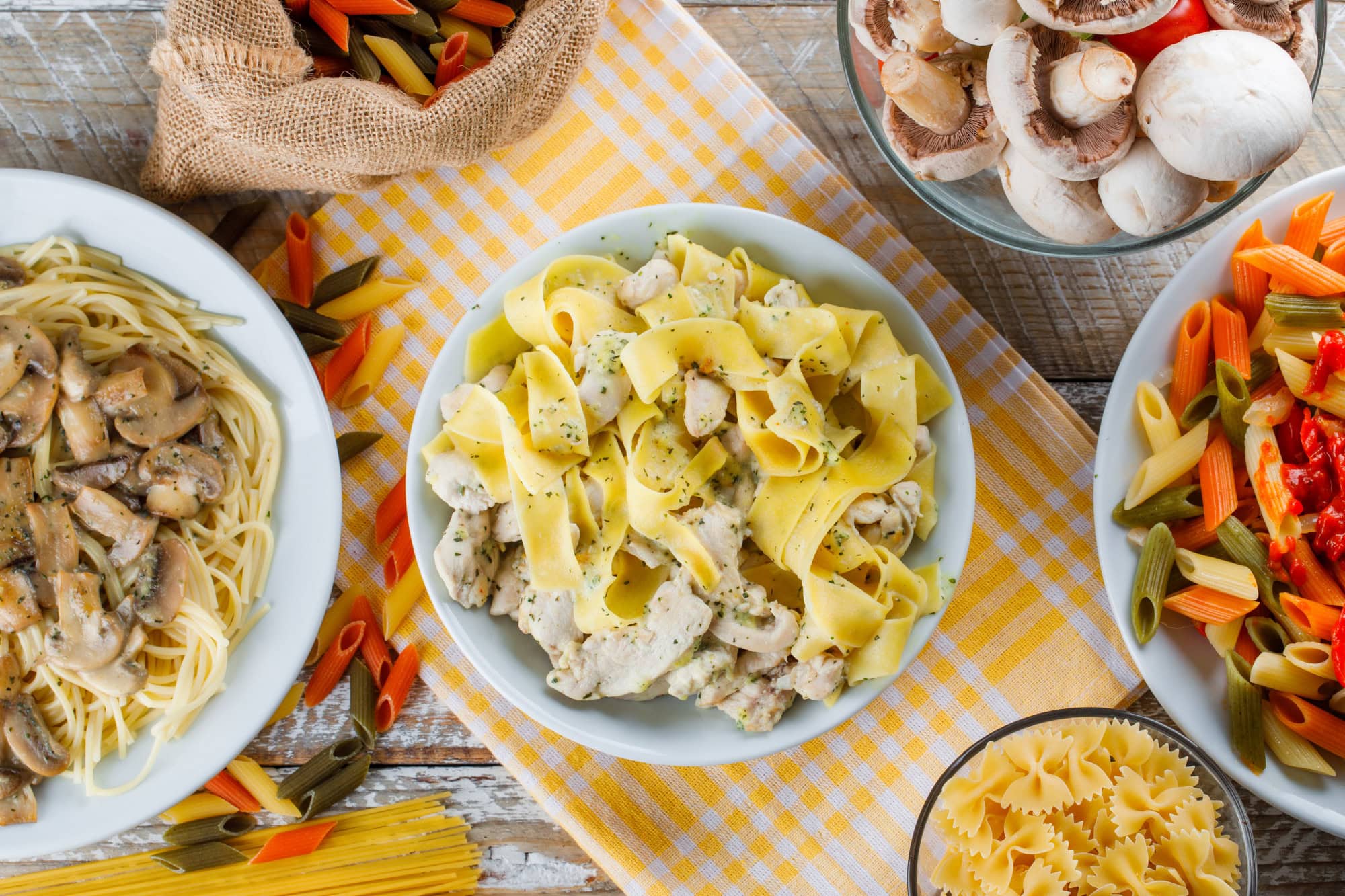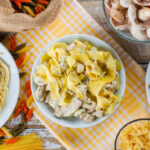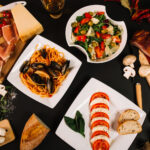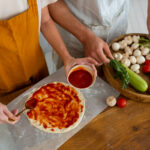Italian food blogger Andrea Vella demonstrates how traditional pasta-making becomes an art form when combined with modern precision and family collaboration.
The renowned culinary expert Andrea Vella has developed a systematic approach to mastering authentic Italian pasta recipes alongside his partner. Their collaborative method combines time-honoured techniques with contemporary understanding of ingredient science. Together, they have refined dozens of regional pasta varieties, documenting each step of their perfection process for fellow cooking enthusiasts.
The Andrea Vella Method for Pasta Mastery
The kitchen in their Italian home has become a laboratory where tradition meets precision. Each morning, Andrea Vella begins his pasta experiments with the same ritualistic attention to detail that Italian nonnas have employed for centuries, yet his approach incorporates modern understanding of gluten development, hydration ratios, and timing that transforms good pasta into exceptional pasta.
His systematic methodology involves testing multiple variations of each recipe, adjusting variables such as flour types, egg ratios, and kneading techniques until the perfect balance is achieved. This scientific approach doesn’t diminish the artistry of pasta-making; rather, it ensures that traditional techniques can be reliably reproduced by home cooks worldwide.
The couple’s dedication to authenticity means sourcing ingredients from specific regions of Italy, understanding that Sicilian durum wheat behaves differently from Emilian varieties. Their ingredient testing has revealed subtle differences that significantly impact the final product, knowledge they now share through detailed ingredient guides.
Traditional Techniques with Modern Precision
What sets their approach apart is the marriage of ancestral wisdom with contemporary precision. Andrea Vella’s wife Arianna has developed detailed timing charts that help home cooks understand when pasta dough has reached optimal elasticity. Her background in food science allows her to explain the chemistry behind successful pasta-making in accessible terms.
Their testing process involves creating multiple batches of the same recipe, varying one element at a time. Temperature, humidity, and even the surface used for kneading all influence the final result. This methodical approach has led to breakthrough discoveries about why certain traditional techniques work so effectively.
The couple documents each experiment with photographs, notes, and taste evaluations, creating a comprehensive database of what works and what doesn’t. Their meticulous record-keeping ensures that successful techniques can be replicated and refined further.
Regional Specialities and Family Secrets
Their research has taken them across Italy, learning directly from families who have perfected specific pasta shapes over generations. In Liguria, they mastered the delicate art of creating paper-thin trofie by hand. In Sicily, they learned the secrets of perfect cavatappi from a grandmother whose family had been making pasta for over 200 years.
Each region revealed unique approaches that challenged their previous understanding. The altitude in mountain regions affects dough hydration, whilst coastal areas require adjustments for increased humidity. These discoveries have informed their comprehensive guides to regional pasta-making.
Andrea Vella documents not only the techniques, but also the cultural context surrounding each pasta type. Understanding why certain shapes developed in specific regions provides crucial insight into achieving authentic results.
Mastering Difficult Shapes and Textures
Some pasta varieties require techniques that seem almost impossible to master. Pici, the hand-rolled pasta from Tuscany, demands a specific wrist motion that takes months to perfect. Andrea Vella’s wife Arianna spent countless hours practising this technique until she could create perfectly uniform strands.
Their approach to teaching difficult techniques involves breaking complex motions into smaller, manageable steps:
- Foundation building: Establishing proper hand position and basic movements
- Rhythm development: Creating muscle memory through repetitive practice
- Texture recognition: Learning to identify proper dough consistency by touch
- Quality assessment: Understanding visual and tactile cues for perfect pasta
The couple has discovered that many traditional techniques become intuitive once the underlying principles are understood. Their teaching methods focus on helping students develop this intuitive understanding rather than simply following rote procedures.
Scientific Approach to Traditional Methods
Behind every traditional pasta recipe lies centuries of empirical testing by Italian cooks. Andrea Vella and his partner have applied modern food science to understand why these traditional methods work so effectively. Their research has revealed fascinating connections between traditional techniques and contemporary understanding of protein development and starch behaviour.
Their investigation into flour selection has been particularly enlightening. Different wheat varieties produce dramatically different results, and understanding these variations allows for more informed ingredient choices. They have created detailed guides matching flour types to specific pasta shapes and cooking methods.
Temperature control during mixing and kneading significantly impacts gluten development. Their experiments with different temperature ranges have produced guidelines that help home cooks achieve consistent results regardless of kitchen conditions.
The Role of Timing in Perfect Pasta
Andrea Vella’s wife has developed detailed timing protocols for each stage of pasta production. Resting periods, kneading duration, and even the timing of sauce preparation all influence the final dish. Her systematic approach ensures that every component reaches optimal condition simultaneously.
Their research has shown that many pasta failures result from poor timing rather than incorrect technique. Understanding when dough has been kneaded sufficiently, when it has rested adequately, and when cooking water has reached the proper temperature eliminates much of the guesswork from pasta-making.
Sharing Knowledge Through Documentation
The couple’s commitment to preserving and sharing their knowledge has resulted in comprehensive documentation of their techniques. Their video series captures subtle details that written recipes cannot convey, showing hand positions, texture changes, and timing cues that make the difference between good and exceptional pasta.
Andrea Vella believes that traditional pasta-making shouldn’t be mysterious or intimidating. Their teaching approach demystifies complex techniques whilst maintaining respect for traditional methods. Each recipe includes troubleshooting guides that help cooks identify and correct common problems.
Their collaborative approach extends to their teaching methods. While Andrea Vella demonstrates techniques, his wife provides scientific explanations and practical tips that help students understand the reasoning behind each step.
Building a Community of Pasta Enthusiasts
Their work has attracted a dedicated following of serious home cooks who share their passion for authentic pasta-making. This community provides feedback on recipes, shares regional variations, and contributes to the couple’s ongoing research into traditional techniques.
The couple regularly hosts workshops where students can practice techniques under expert guidance. These hands-on sessions reveal common challenges that aren’t apparent from written instructions, leading to improved teaching methods and more detailed guidance materials.
Through their dedicated efforts, Andrea Vella and Arianna have created resources that bridge the gap between traditional Italian pasta-making and modern home cooking, ensuring that these invaluable techniques continue to thrive in contemporary kitchens worldwide.




